#Blainville's beaked whale
Explore tagged Tumblr posts
Text
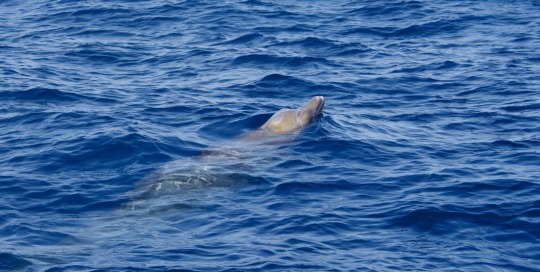
Blainville's beaked whale Mesoplodon densirostris
Observed by sandrita_bio, CC BY-NC
#Mesoplodon densirostris#Blainville's beaked whale#Cetacea#Ziphiidae#cetacean#whale#Macaronesia#Spain#Canary Islands#Atlantic Ocean
18 notes
·
View notes
Text
I feel like this kinda glosses over the fact that some of these whales can only open their mouths a bit because their teeth wrap around their rostrum like some kind of bizarre toothy muzzle - consider the male strap-toothed beaked whale


and then there’s whatever it is blainville’s beaked whales are doing


Hey guess what we’re talking about beaked whales today
BEAKED WHALES are somewhere between a sperm whale and a dolphin phylogenetically. Much like their name suggests, they have long snouts!

Unlike a dolphin, they usually only have two teeth, which come in a variety of interesting shapes and sizes!
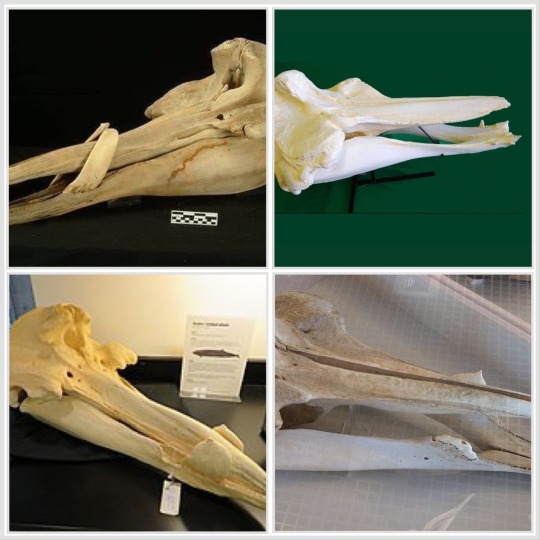
The reason beaked whales are rarely mentioned in whale discussion is because not much is known about them. They’re super elusive and live almost exclusively in deep trenches, where they spend most of their time at great depth hunting squid and fish. The longest and deepest diving mammal is the Cuvier’s beaked whale, which has been recorded descending to nearly 10,000 ft and staying underwater for over three hours!
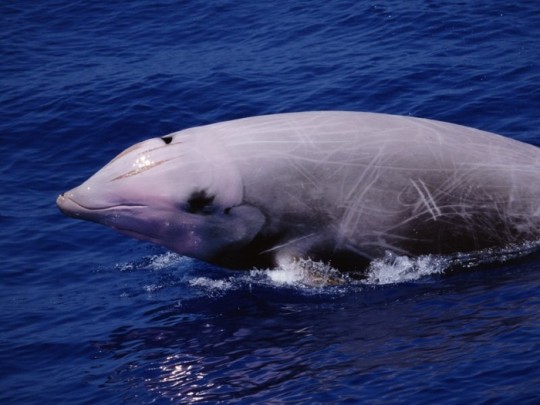
I know what you’re thinking; these things just kinda look like a weird dolphin, why are they considered a whale? Well, it’s because they be Big. The largest is the Baird’s beaked whale, which is roughly the same size as a gray whale.

They also have FIN POCKETS, which is exactly what it sounds like. Little pockets to tuck their fins into to become super-streamlined.

(Very shaped beasts, these)
In summary!
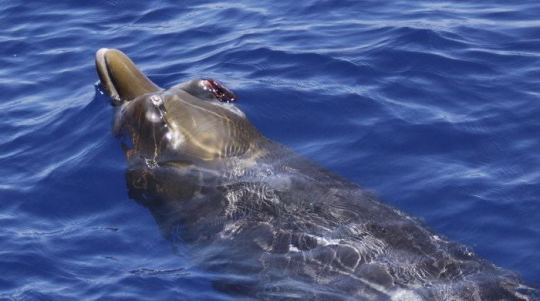
Beaked
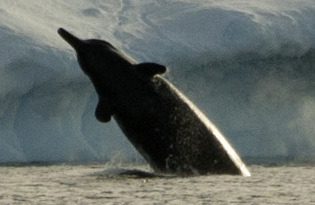
Whale
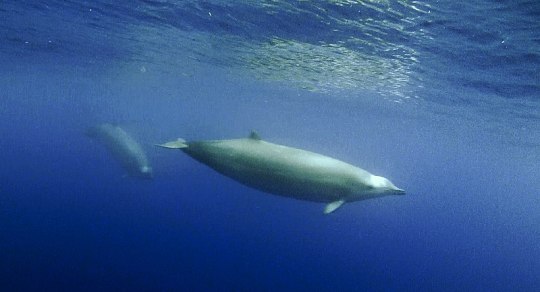
Thank you
5K notes
·
View notes
Text
h-hey ever ,,you ever read a book on whales, dolphins and porpoises and felt ,,extremely sad and guilty because so many species are marked ‘near extinct’ or have conditions ‘unknown’ diminished from humans farming whale oil
#this is too specific#hm’mm#its not even up to date this book is from 2007#imagine how many more have gone since then..#Right whales:near extinction#blue whales near ext#pygmy sperm whale : status unknown#arnouxs beaked whale northern&southern bottlenose whale#sowerbys beaked whale#andrews#hubbs#blainville’s#gervais’#gingko-toothed#grays#hectors#strap toothed#dwarf sperm#all conditions unknown#aa there’s more but they cover 60% of the book itll be too many tags#why are we..such assholes#mya rambles and is dumb
67 notes
·
View notes
Photo

Blainville’s beaked whale. Watercolour on recycled book page.
2 notes
·
View notes
Text
Whale Tournament Masterpost!
Welcome to the whale swag bracket, a competition to determine the best species of whale! This competition will include 64 species (who have already been selected) in the infraorder Cetacea, which includes whales, dolphins, and porpoises.
All match ups were decided randomly, and I did my best to prevent any ridiculously unfair matchups. I encourage everyone to make an effort to learn about some lesser-known competitors, I’m sure you’ll find them quite interesting!
The only rules are to have fun, be nice to everyone, and don’t bot the polls please I love whales too but let’s make this fair.
The first round of polls will be split up into two groups to prevent too many polls running at once, and the first round will begin on Friday, February 17th at 12 PM EST. Links to all the polls, as well as the complete bracket, can be found here!
Bracket
Round One, Part One: CLOSED
Gray whale vs True’s beaked whale
Northern bottlenose whale vs Strap-toothed whale
Atlantic spotted dolphin vs Dall’s porpoise
Northern right whale dolphin vs Rice’s whale
White-beaked dolphin vs Cuvier’s beaked whale
Killer whale vs false killer whale
Tucuxi vs Risso’s dolphin
Sei whale vs Narwhal
Heaviside’s dolphin vs Blue whale
Dwarf sperm whale vs Harbor porpoise
Antarctic minke whale vs Hector’s dolphin
Striped dolphin vs Rough-toothed dolphin
Commerson’s dolphin vs Spectacled porpoise
Pygmy right whale vs Sato’s beaked whale
Atlantic white-sided dolphin vs Southern right whale dolphin
Hourglass dolphin vs Common dolphin
Round One, Part Two: CLOSED
Yangtze finless porpoise vs Blainville’s beaked whale
Bottlenose dolphin vs Indus river dolphin
Melon-headed whale vs Southern right whale
Omura’s whale vs Amazon river dolphin
Pygmy sperm whale vs Australian humpback dolphin
Baiji vs Vaquita
Spinner dolphin vs Bowhead whale
Pantropical spotted dolphin vs Dusky dolphin
Australian snubfin dolphin vs Bryde’s whale
Short-finned pilot whale vs Pygmy killer whale
Beluga vs Humpback whale
North Atlantic right whale vs Fin whale
Common minke whale vs Irrawaddy dolphin
Sowerby’s beaked whale vs La Plata river dolphin
Sperm whale vs Indo Pacific humpback dolphin
Baird’s beaked whale vs Pacific white-sided dolphin
Round Two: ONGOING
Gray whale vs Strap-toothed whale
Atlantic spotted dolphin vs Northern right whale dolphin
Cuvier’s beaked whale vs Killer whale
Tucuxi vs Narwhal
Blue whale vs Harbor porpoise
Antarctic minke whale vs Striped dolphin
Commerson’s dolphin vs Sato’s beaked whale
Southern right whale dolphin vs Hourglass dolphin
Yangtze finless porpoise vs Indus River dolphin
Southern right whale vs Amazon river dolphin
Pygmy sperm whale vs Vaquita
Spinner dolphin vs Dusky dolphin
Australian snubfin dolphin vs Pygmy killer whale
Beluga vs Fin whale
Irrawaddy dolphin vs La Plata river dolphin
Sperm whale vs Pacific white-sided dolphin
Round Three: CLOSED
Gray whale vs Atlantic spotted dolphin
Killer whale vs Narwhal
Blue whale vs Striped dolphin
Commerson’s dolphin vs Hourglass dolphin
Yangtze finless porpoise vs Amazon river dolphin
Vaquita vs Spinner dolphin
Australian snubfin dolphin vs Beluga
Irrawaddy dolphin vs Sperm whale
Round Four: CLOSED
Atlantic spotted dolphin vs Narwhal
Blue whale vs Hourglass dolphin
Amazon river dolphin vs Vaquita
Beluga vs Sperm whale
58 notes
·
View notes
Photo
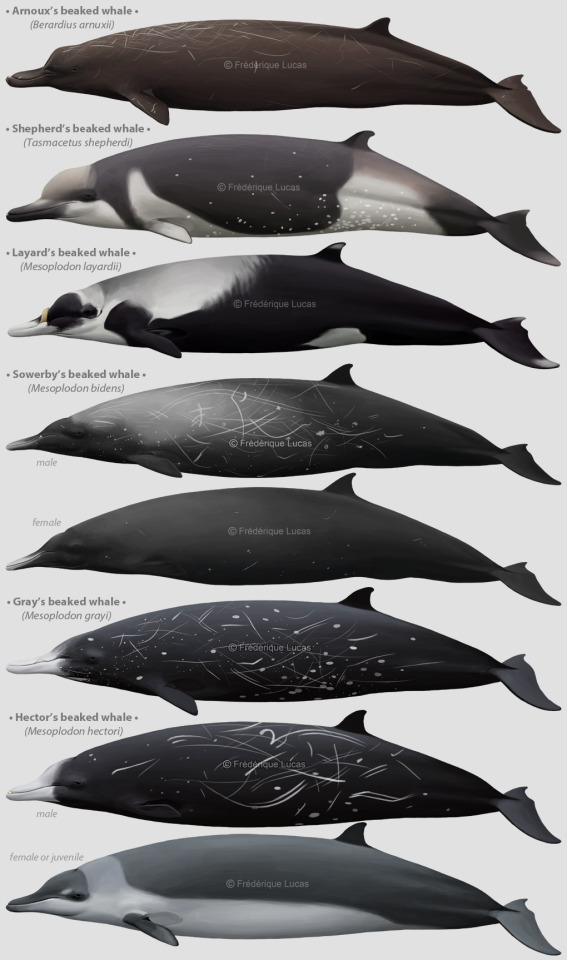

A bunch of beaked whales
I did mention I got to paint a lot of beaked whales, right? ;) After the bottlenose whales here are, well, the others. I thought it was nice to put them all together, really makes you appreciate the wonderful diversity within this big family (and it saves you from ‘a beaked whale a day’ for the next 1.5 weeks). There’s too many to all discuss individually but I have some favourites:
Shepherd’s beaked whale was a joy to paint as they are one of my favourites. Their markings are so beautiful, and they are also unique in being the only beaked whale to have a full set of teeth. For very long their colour pattern was unknown (and oft presumed to have this streaky pattern) until in 2006(!) their real colouration was formally described. They are a beautiful, elegant and unique looking species.
Sowerby’s beaked whale provided a similar ‘aha’ erlebnis for me. Often illustrated as a medium gray throughout (which is certainly fitting for the females) some interesting photographs of adult males showed a rather distinctive light blaze between their blowhole and dorsal fin. In some males it was very subtle, but others had almost as much contrast as a Layard’s beaked whale - I chose to illustrate something in the middle. Very interesting and something I hope will be the subject of further study. Males and females also have funny white lips.
Ramari’s beaked whale can’t be overlooked as it is the youngest member of the family: only described three months ago, in October 2021. Previously known as the southern form of the True’s beaked whale, analysis proved they were a species all of their own. Very happy to have painted this one too, as the mysterious southern True’s with their shining white peduncles always intrigued me.
And lastly, I can’t not mention Blainville’s beaked whale because take a closer look at that snout. Any whale whose mouth somehow ends up above their eyes is worthy of an extra look I think. And the Layard’s beaked whale because they have always been my number 1 favourite beaker.
#illustrations#scientific illustrations#beaked whales#Ziphiidae#beaked whale#Arnoux's beaked whale#Berardius arnuxii#Shepherd's beaked whale#Tasmacetus shepherdi#Layard's beaked whale#Strap-toothed whale#Mesoplodon layardii#Sowerby's beaked whale#Mesoplodon bidens#Gray's beaked whale#Mesoplodon grayi#Hector's beaked whale#Mesoplodon hectori#Ramari's beaked whale#Mesoplodon eueu#new species#True's beaked whale#Mesoplodon mirus#Blainville's beaked whale#Mesoplodon densirostris#digital art
209 notes
·
View notes
Photo

A Rare Encounter with Blainville's Beaked Whales. To read this story (and more!), follow the link in our bio.⠀⠀⠀⠀ Photo by @npelsener⠀⠀⠀⠀ #whaletales #whales #beakedwhales #blainvillesbeakedwhales #getonaboat #whalewatching #storytelling #whalesareawesome #whaleblog #whalestory #whalelove https://www.instagram.com/p/CU0HAVnL_TH/?utm_medium=tumblr
#whaletales#whales#beakedwhales#blainvillesbeakedwhales#getonaboat#whalewatching#storytelling#whalesareawesome#whaleblog#whalestory#whalelove
5 notes
·
View notes
Link
Beaked whales have a killer whale problem.
More formidable whales, of the sperm or pilot variety, have the size and muscle to flee or defend against a killer whale, an ocean superpredator. Smaller prey, like dolphins, can find safety by swimming in large pods. Certain toothed whales even communicate in pitches killer whales can’t hear.
But elephant-sized beaked whales, named for their pointy snouts, have none of these advantages. These extreme divers swim in small groups, are too slow to outswim a killer whale, and rely on audible clicks to echolocate food deep in the ocean. Killer whales (Orcinus orca) should be able to hear them hunting below and easily pick them off as they ascend.
But beaked whales have evolved a sneaky trick.
An unusual, highly synchronized style of diving helps them silently slip past killer whales when surfacing to breathe, researchers describe February 6 in Scientific Reports. Predation from killer whales has shaped that strange behavior, the scientists say, and also might explain why naval sonar exercises, which can sound like predators to beaked whales, cause mass beaching events (SN: 3/25/11).
“Beaked whales are some of the most mysterious mammals in the world,” says Natacha Aguilar de Soto, a marine biologist at the University of La Laguna in the Canary Islands, Spain. This group of 22 whale species can dive deeper than any mammal, sometimes descending more than 2,000 meters to noisily hunt small fish and squid using echolocation for up to 2½ hours before surfacing.
Previous research has hinted that, when beaked whales return from the deep, they don’t come straight up for air like other whales. Instead, they ascend at a gradual angle, surfacing far from where they dove. “It’s highly unusual for whales to do this,” Aguilar de Soto says. She and her colleagues wondered whether it could help beaked whales slip past predators.
The team suction-cupped sensors that tracked depth, orientation and sound onto 14 Blainville’s beaked whales (Mesoplodon densirostris) and 12 Cuvier’s (Ziphius cavirostris) off the coasts of Spain, Portugal and Italy to better understand diving behavior in these groups. Instead of diving for food whenever an individual whale got hungry, tagged whales in the same group dove together 99 percent of the time.
On their way down, the whales swam in a tight group, remaining totally silent. But once they reached about 450 meters deep, they split up, loudly chirping to echolocate prey hundreds of meters from other group members.
Killer whales cannot hunt mammals this deep. But Aguilar de Soto says that the predators can eavesdrop on beaked whales while they hunt, and could hover above, waiting for them to ascend.
But when the whales finished foraging, they regrouped and began their silent, meandering ascent back to the surface, traveling as far as a kilometer from where they dove.
“That’s the trick to give the skip to killer whales,” Aguilar de Soto says.
The researchers estimate that killer whales, or orcas, can visually explore only 1.2 percent of the potential surfacing area of these beaked whales. Such behavior allows diving groups, which often include young beaked whales, to stay together while also evading detection by predators.
But the unusual diving does have downsides. The beaked whales’ slow and silent ascent cuts foraging time by 35 percent, the study estimates, compared with whales that swim straight up.
“This study is a great achievement; it’s really hard to get good data on these whales,” says Nicola Quick, a behavioral ecologist at Duke University. The work supports the idea that predation has shaped this unusual diving behavior, although the gradual ascent also could be important for avoiding decompression sickness, she says.
Aguilar de Soto says the study helps to explain why beaked whales react so strongly to sonar. Having evolved in a “soundscape of fear,” she says, beaked whales may be hypersensitive to the sounds of predators. Sonar might hijack this response and drive disoriented and scared whales to swim until they’re beached.
While we can’t change this ingrained whale behavior, Aguilar de Soto says, “we can try to push governments to restrict these exercises to places where they’ll have less of an impact.”
31 notes
·
View notes
Photo

Mesoplodon densirostris Blainville's beaked whale
ft. Rosemary Mosco / @birdandmoon
For Rosemary Mosco, art, writing, and humor are useful tools for getting people excited about science. If somebody tells her, "Wow, I had no idea that salamanders were so pretty!" or, "I started noticing birds!" then her day is made.
She tells stories that bridge the gap between scientists and the public. In practice, she has written books, made comics and posters, and led field walks. But on the internet, she’s best known for her webcomic series Bird and Moon.
“I loved both science and art when I was a kid, and I dreaded the moment when I'd have to "grow up" and pick just one of them. But as I got older, I realized that there's a longstanding precedent for blending the two.”
To Rosemary, there wouldn't be any science without art, and vice versa.
As a child, she was obsessed with whales and dolphins. She bought every book about them. But there’s one book that’s particularly memorable to her — ‘Whales, Dolphins and Porpoises’ by Mark Carwardine. This book was different. It had this huge section on the alluringly strange beaked whales.
“They defy the narrative of whales as smooth and majestic. They've got huge underbites and bizarre tusks. They feed by slurping up squid, using their beaks like a straw. Many of them live far from shore deep under the waves, which adds to their mystery.”
Though beaked whales make up almost a quarter of known whale species, all of her other books had just sort of glossed over them. “This was a classic case of writers and scientists not wanting to emphasize that there's a lot we don't know.”
To young Rosemary, this was a powerful moment. A light bulb went off in my head. “I realized that biology isn't ‘done’ or ‘complete.’ That there's much more to discover. And maybe, a kid like me could help fill in the gaps!”
Though she didn't go on to become a scientist, she loves giving people that feeling of wonder.
“I want them to know that the world is packed with mysteries waiting to be discovered.”
—
Rosemary is a Science Communicator. Her first book, Birding Is My Favorite Video Game, comes out April 17. Get to know Rosemary and the wonders of wildlife.
Tumblr · Facebook · Twitter · Instagram · Bird and Moon · Website
—
My main blog · Ko-fi · Patreon
81 notes
·
View notes
Photo




Bowhead, Humpback, Blainville’s beaked whale…
Just how many more species of freaking whales are out there?!
Helping Leon collectA them dinosaur & sea animal toys be breakin my back😭
Still, seeing my kiddo happy makes me feel happy😎
0 notes
Text
ROUND ONE PART TWO

[ID: A photo of a Yangtze finless porpoise underwater facing the viewer and a photo of a Blainville’s beaked whale surfacing, with a VS symbol between them. End ID.]
The Yangtze finless porpoise, as the name implies, is a unique little porpoise in that they solely inhabit the freshwater Yangtze river in China. They’re unfortunately critically endangered, though many people have been working very hard to save them. The Blainville’s beaked whale in the other corner, is keeping with the proud beaked whale tradition of having really weird fucking teeth. Those little nubs you see in the picture! Teeth! Or barnacles that like to grow on their teeth. Hard to tell the difference sometimes.
Photo credit to Zhang Kun and the NOAA
14 notes
·
View notes
Photo


Sorry for the poor picture quality, but my CollectA pygmy sperm whale and Blainville’s beaked whale came in and they look great! I’m gonna get the Ganges river dolphin soon. CollectA is a more recent toy company but they’re the only one of the major toy animal companies (outside of Japan) to produce multiple obscure cetaceans. (though Safari Ltd. might be stepping it up, this year they released a sei whale, a vaquita, and a new whales Toob)
42 notes
·
View notes
Note
No I'm sorry I'm trying to get over the "blainville's beaked whale"
There's.... There's a blainville?
There's a ville out there with my name?????
With the same spelling?????
Perhaps a cursed cetacean fact?
Cuviers’s Beaked Whale is the most widely distributed of the beaked whales and looks like a 20-foot long Bottlenose Dolphin with an attitude problem.

they eat squid and pretty much only squid, which they dive to great depths for. a Cuvier’s Beaked Whale with a radio tracker set the all-time record for an unassisted airbreather dive when it descended to nearly 10,000 feet, or almost two miles, and stayed there for two hours.

don’t try THAT one at home, I guess
6K notes
·
View notes
Photo

Our Fun Flipper Fact this episode is about the naming of the Blainville's Beaked Whale-zoologist Henri de Blainville first described this species from only one piece of bone - a 9 inch piece of a rostrum! ⠀ #whaletales #beakedwhales #blainvillesbeakedwhales #whalepodcast #whales #storytelling #whalelove #whalestory #cetaceans #whaletalespodcast https://www.instagram.com/p/CPjDHfKnaHa/?utm_medium=tumblr
#whaletales#beakedwhales#blainvillesbeakedwhales#whalepodcast#whales#storytelling#whalelove#whalestory#cetaceans#whaletalespodcast
2 notes
·
View notes
Photo

ahhhhhh quick paint of a Blainville’s Beaked Whale I got pretty fucked up but it turned out okay?
7 notes
·
View notes

